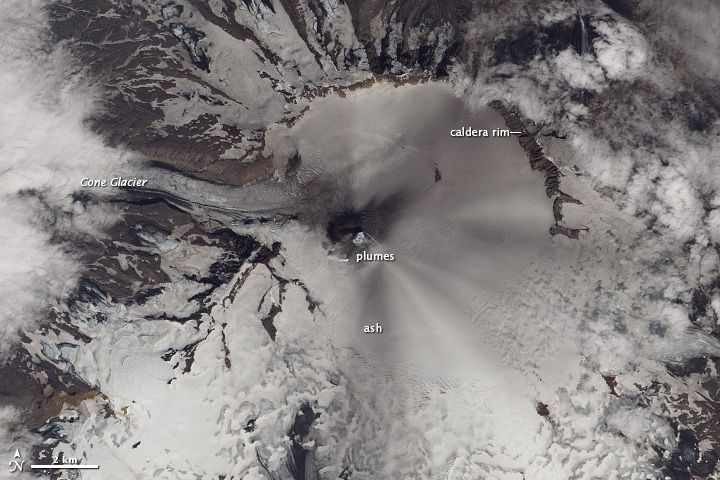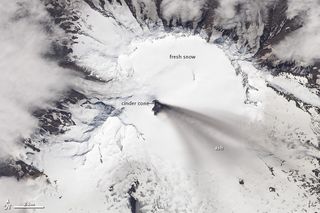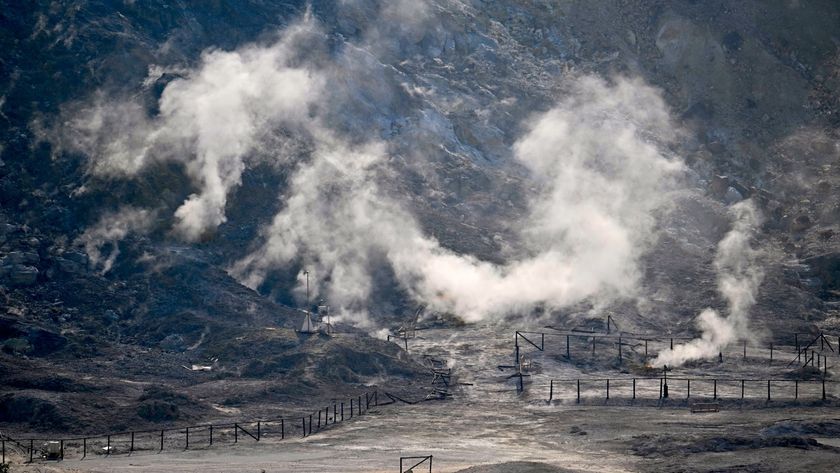
Heat and Ash Melt Alaska Volcano's Snowy Blanket

Summer sun and heat, combined with a coating of ash from seven weeks of continuous eruption, have revealed the rocky summit of Alaska's Veniamanof volcano. A Landsat 8 image snapped July 25 shows the volcano's caldera rim and Cone Glacier. The caldera is a giant crater formed during a gut-busting eruption about 3,700 years ago, which emptied out and collapsed Veniamanof's magma chamber. Cone Glacier is one of several summit glaciers snaking down the slopes of the volcano, one of the tallest (8,225 feet, or 2,507 meters) in the Aleutian Range.
Three plumes of volcanic gas rise from a 1,000-foot-high (300 m) cinder cone at Veniamanof's summit in the latest Landsat 8 image of the volcano, NASA's Earth Observatory reports. Ash cloaks snow and ice at the summit crater. Though the volcano has erupted steadily since it rumbled to life on June 13, much less ash was visible in an earlier Landsat 8 image captured on July 9. Freshly fallen snow likely buried the volcanic debris, the Earth Observatory said. But late July brought unusually warm weather to southern Alaska, which combined with the heat-absorbing dark ash to melt the snow. On Aug. 2, Anchorage set a record for 15 days of 70 degree Fahrenheit (21 degrees Celsius) or higher temperatures in a row.

Read more: NASA Earth Observatory
Email Becky Oskin or follow her @beckyoskin. Follow us @OAPlanet, Facebook & Google+.
Sign up for the Live Science daily newsletter now
Get the world’s most fascinating discoveries delivered straight to your inbox.












